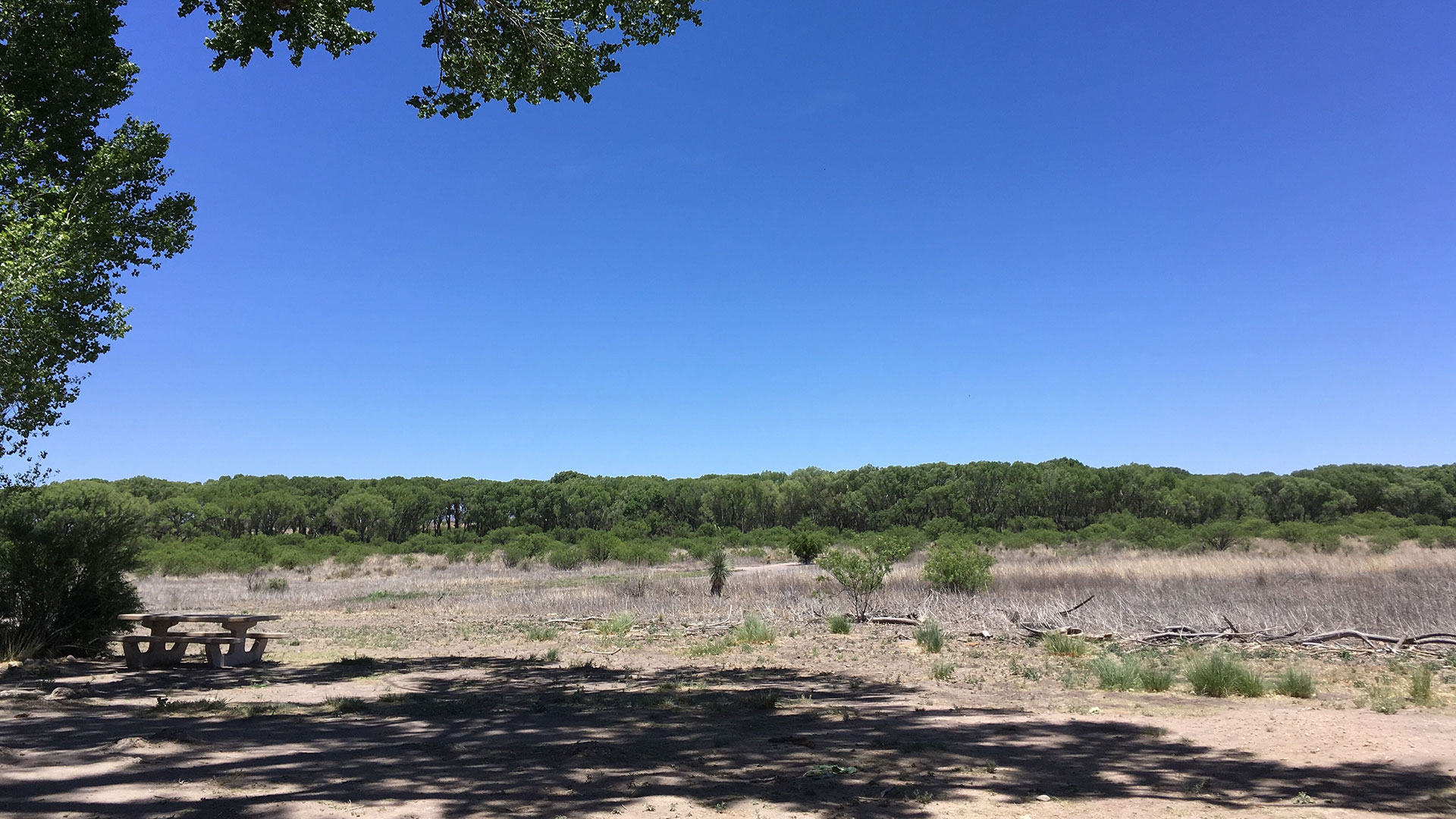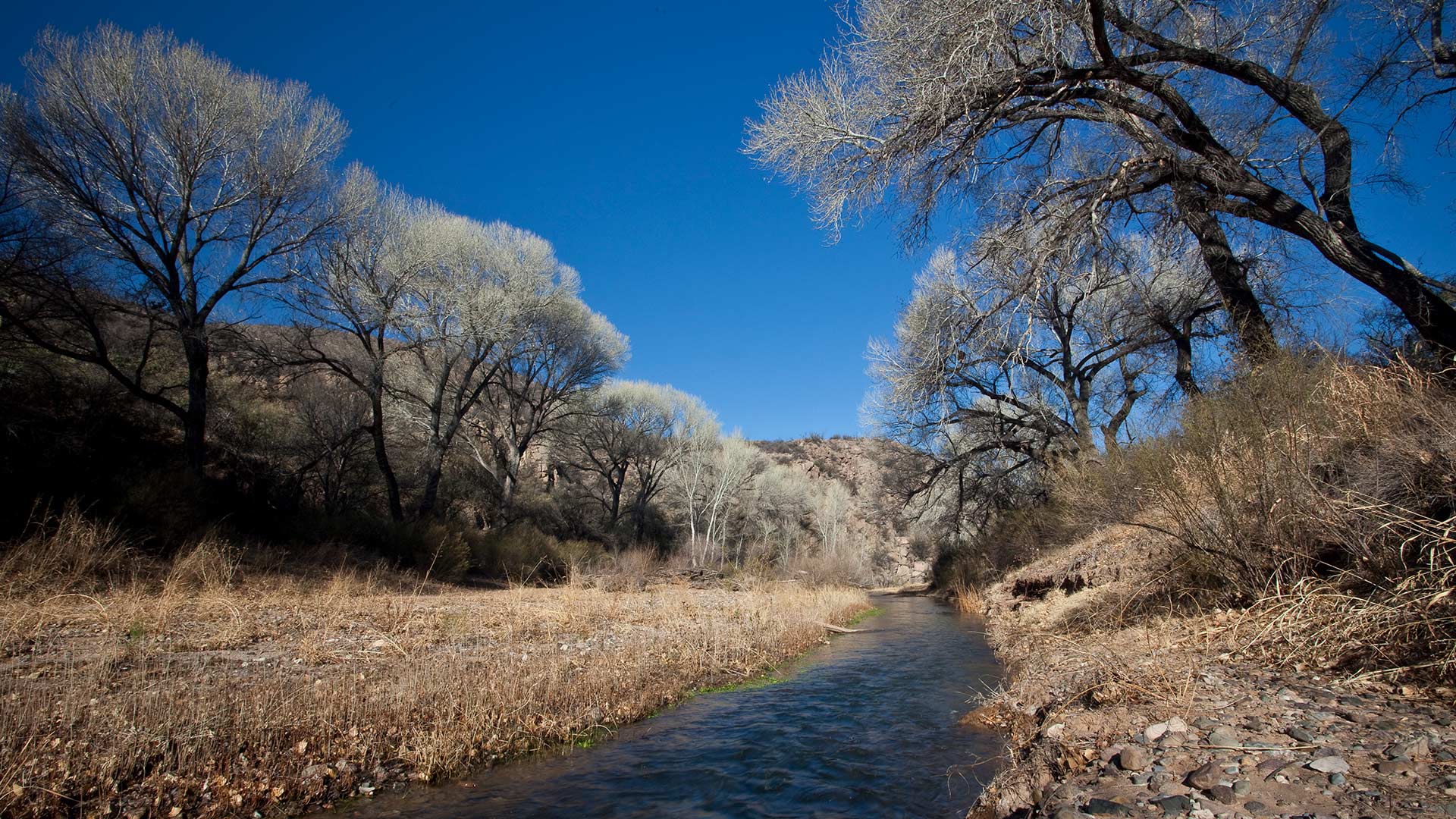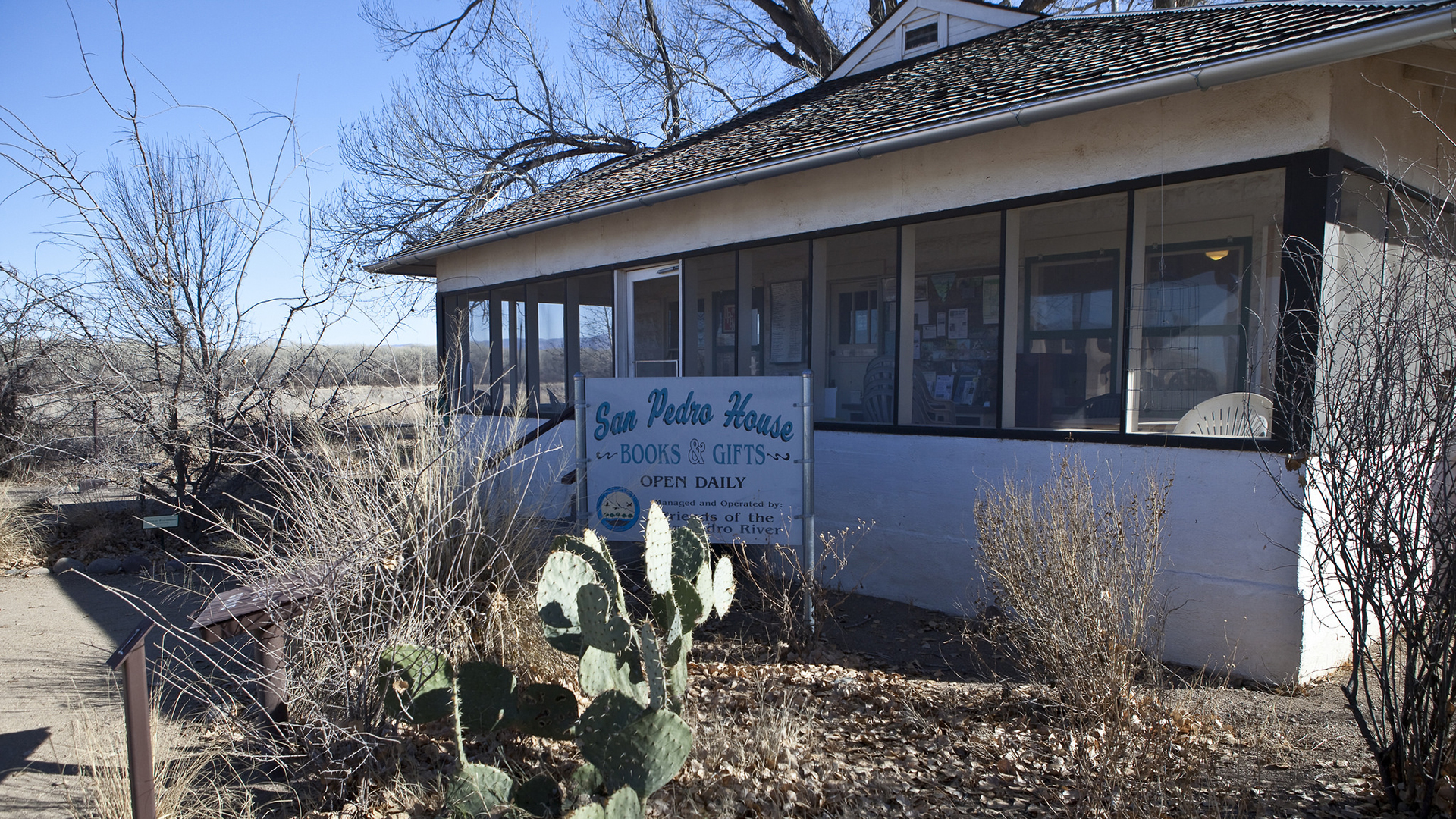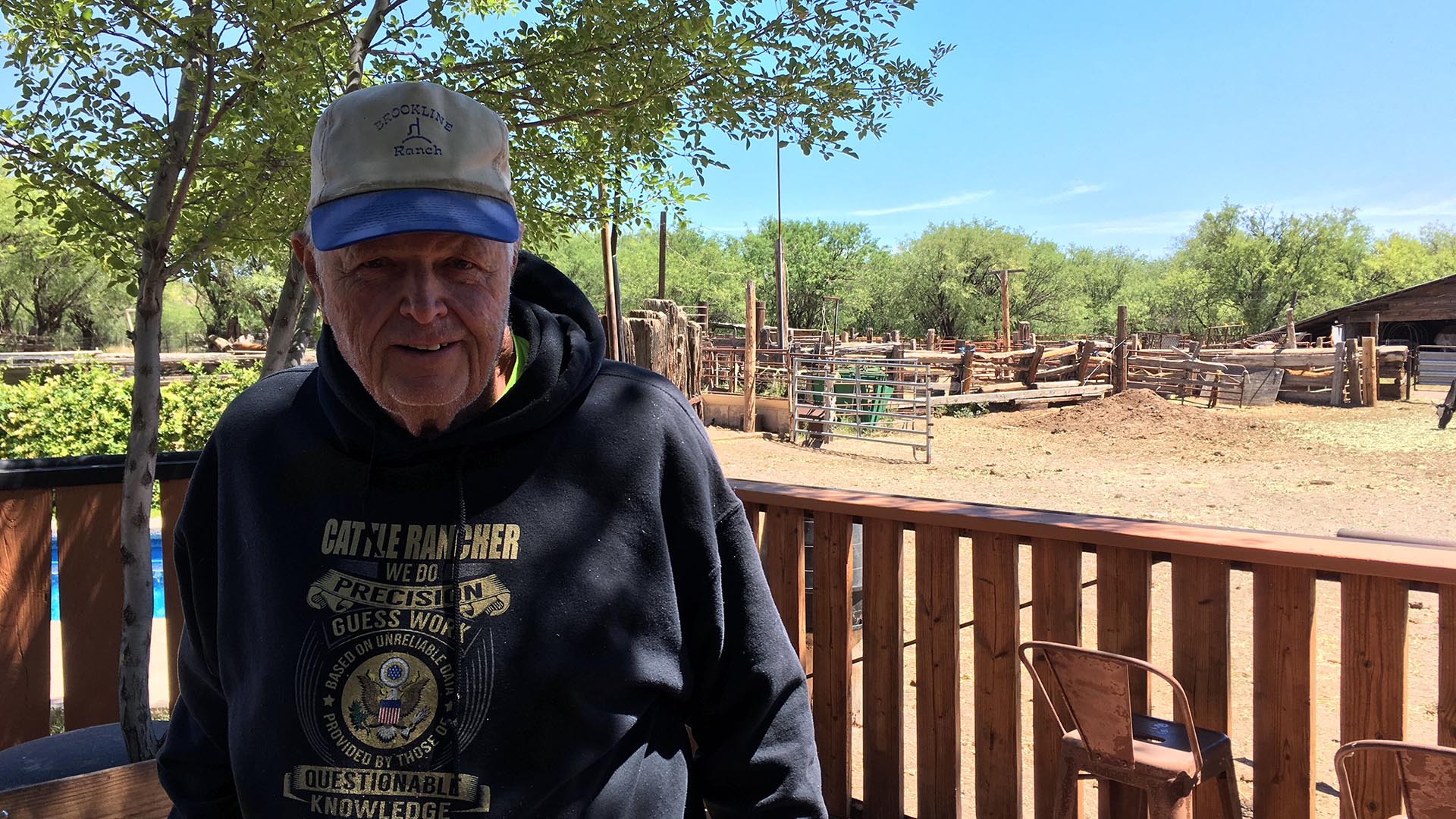 A view of the San Pedro Riparian National Conservation Area.
A view of the San Pedro Riparian National Conservation Area.
The Bureau of Land Management has released its final resource management plan for the San Pedro Riparian National Conservation Area near Sierra Vista. The document will guide land use decisions on the property for the next 15 to 20 years.
The plan will help the federal agency decide what to do to keep the river, and its riparian corridor, healthy. After a lengthy scoping, evaluation and public review process, the agency released its final plan at the end of April.
Scott Feldhausen manages the BLM's Gila District, into which the San Pedro River flows north from Mexico. Feldhausen says the demands of the public and the health of the land and river have changed since the conservation area was established in 1988. That means the agency needs to change its strategy, too.
“Sitting still and not doing anything will never enhance or address those resource concerns. So we are proposing some active resource management,” Feldhausen said.
The BLM’s plan gives the agency the option to use tools like prescribed fire, herbicides and mechanical tools as it deems necessary — with public input.
“So if we decide we need to reduce the number of mesquite trees in the uplands to both improve wildlife habitat and reduce water consumption, then we'll identify the different tools we might use and go out to the public at that time and talk about the when, the why, the where,” Feldhausen said.
 The San Pedro Riparian National Conservation Area in Cochise County, Arizona.
The San Pedro Riparian National Conservation Area in Cochise County, Arizona.
But those are exactly the kinds of things local environmentalists, like Michael Gregory, don’t think should be used.
“The very concept of use of herbicides to my mind should be off-limits in this particular kind of landscape,” Gregory said.
Gregory helped get the San Pedro Riparian NCA established and says the land should be managed for conservation first and foremost. While most BLM lands are managed under a multi-use approach that favors production of resources like oil, gas, mining and timber, the San Pedro designation is different.
“Under national conservation areas, you do not have to follow multiple use, or sustained yield, you're here to protect the resource, and that's it,” Gregory said. “The San Pedro is the last undammed river in Southwest. We've got to protect that.”
The new plan increases recreation throughout the property, which Gregory also disagrees with: “The more traffic you get, the more trampling you get. The more interference with wildlife you get.”
Tricia Gerrodette is a member of the Friends of the San Pedro River, a volunteer organization that runs the San Pedro House visitors center. She says her group has public safety concerns around the BLM’s expansion of hunting under the plan, which would allow firearms on the entire conservation area.

“That's a really big change, and it's allowing high-powered rifles to shoot at rabbits or coyotes any day of the year in an area where there are a lot of people out for peace and quiet or walking their dogs or their kids,” Gerrodette said.
BLM manager Feldhausen said the northern part of the SPRNCA has been open to hunting for decades without problems, and it made sense to bring the whole area in line with state hunting regulations. In response to public concerns, the agency increased the buffer around the highly visited San Pedro House.
But perhaps one of the most contentious aspects of the plan is to continue to allow grazing and to use targeted grazing as a land management tool.
“Although there's a lot of claims, and some studies indicate it can be used effectively for management of grasslands and rangelands, in general, we know that grazing is one of the most destructive practices that has ever happened in the West,” Gregory said.
Rancher Mike Hayhurst disagrees.
“Don't believe everything that some people tell you about how all cattle grazing is bad,” he said.
Hayhurst runs about 100 cows on a portion of the San Pedro Riparian area, mostly on a tributary river called the Babocomari.
“If you do it right, it's going to be an improvement to the land. And I think we do it right.”
Hayhurst's Brookline Ranch, which also includes private and state land, existed before the national conservation area was established. He said he and his wife are good stewards who use rotational grazing and rest pastures for long stretches to let grasses recover.
 Mike Hayhurst ranches about 100 cattle on a tributary of the San Pedro River.
Mike Hayhurst ranches about 100 cattle on a tributary of the San Pedro River.
“We emulate the buffalo — holistic grazing pattern,” he said.
Hayhurst supports the BLM’s plans to use vegetation management tools, including targeted grazing, to help the landscape.
“We've probably done 5,000 acres of brush control on our state land and it's just amazing what's it done to return it to the normal state, to what it should have been,” Hayhurst said.
In response to public concern, the BLM adjusted its final plan to limit grazing to existing grazing allotments (about 7,000 acres, or roughly 13% of the whole conservation area) rather than expanding it to the entire conservation area as it had earlier proposed.
Feldhausen says it’s always difficult to walk a line between competing interests, but he’s glad so many people care so deeply about the San Pedro Riparian area.
“It’s a big challenge. It’s not an easy one to answer. Right now we’re trying to set a path for what that future should look like,” Feldhausen said.
Still, Gerrodette said she expects lawsuits from several conservation organizations will follow the publishing of the final plan.
The BLM is in the protest period of its resource management plan through Tuesday, May 28, 2019. The public can read the full plan here, and submit formal protests here.

By submitting your comments, you hereby give AZPM the right to post your comments and potentially use them in any other form of media operated by this institution.